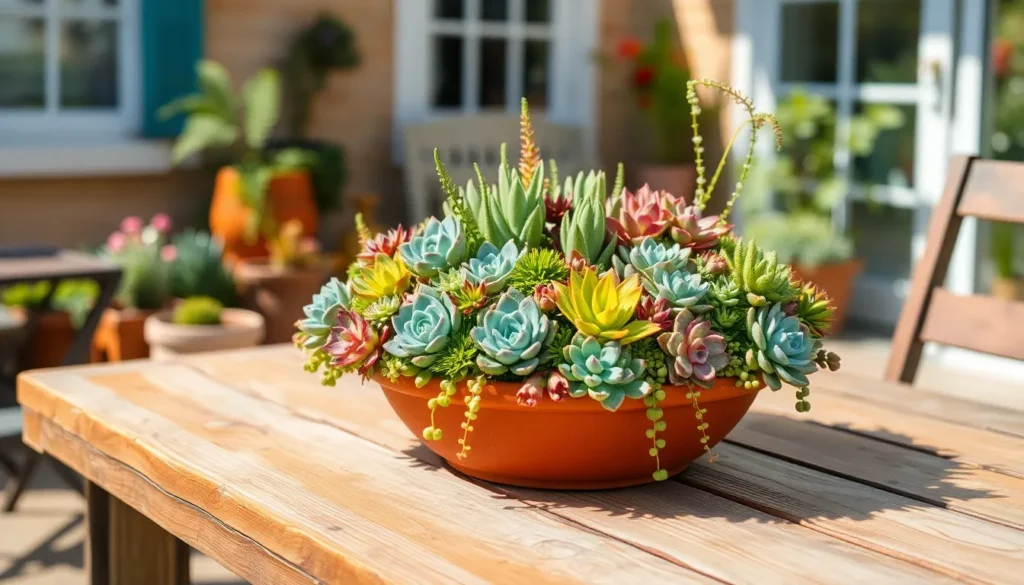Imagine transforming a dull corner of your home into a vibrant oasis with just a few simple steps and some charming succulents. Whether you’re a seasoned green thumb or just dipping your toes into the world of gardening, creating succulent arrangements offers a delightful mix of creativity and tranquility that anyone can embrace. With their diverse shapes, colors, and textures, succulents provide a canvas for endless artistic expression, allowing even the most inexperienced gardener to craft living masterpieces.
Succulents, with their hardy nature and striking appearance, are the perfect gateway for anyone eager to explore the joys of gardening. These resilient plants not only thrive with minimal care but also invite you to experiment with various styles, from minimalist zen gardens to eclectic tabletop displays. In this article, we’ll delve into the essentials of selecting, arranging, and caring for succulents, offering you step-by-step guidance to bring your creative visions to life.
Embarking on this journey, you’ll discover how to choose the right plants that complement each other and learn the secrets to crafting arrangements that captivate the eye and endure through the seasons. We will explore the best tools and materials needed to set up your succulent display, ensuring that your creations are as sturdy as they are beautiful. Join us as we unlock the artistic potential of succulents, transforming your living spaces into vibrant sanctuaries of green.
Choosing Beginner-Friendly Succulents
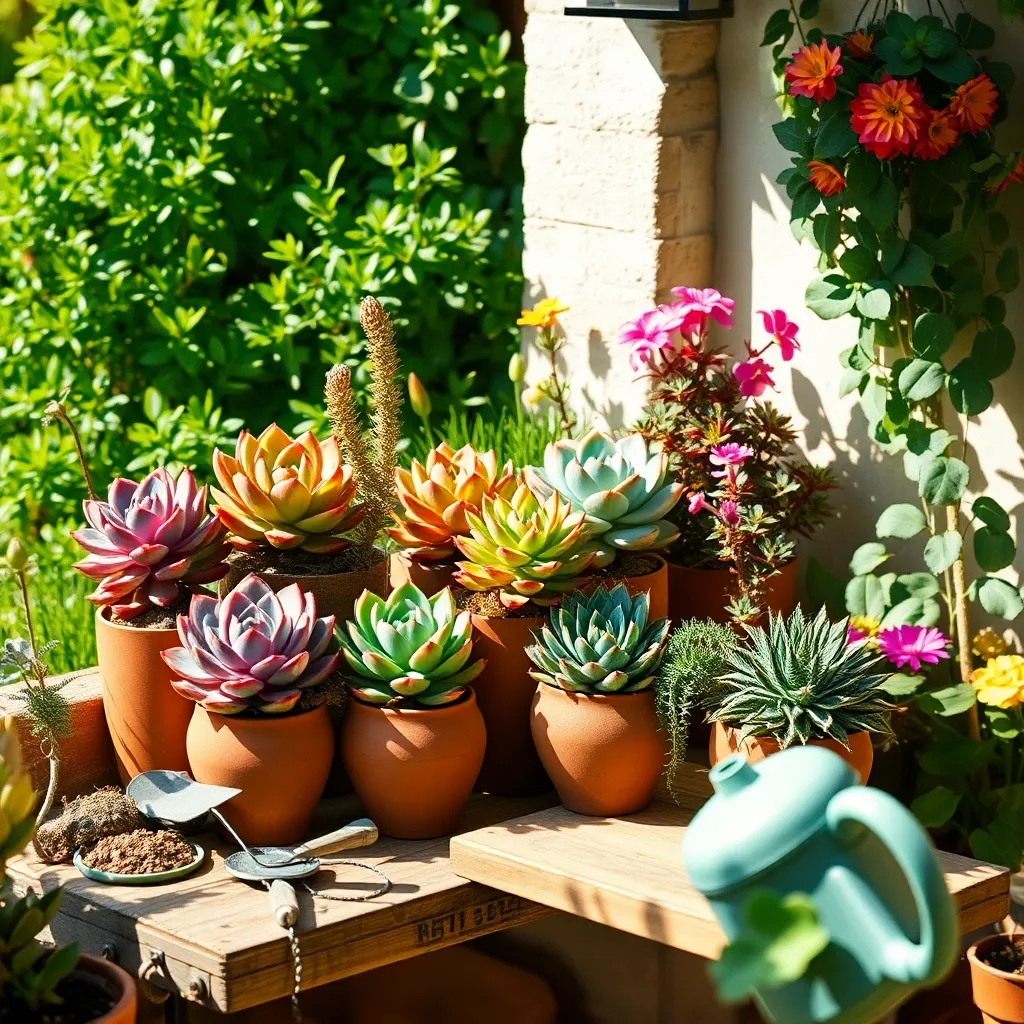
To start your succulent journey, consider selecting plants that are resilient and low-maintenance. Jade plants (Crassula ovata) are excellent for beginners due to their forgiving nature and attractive appearance.
These succulents thrive in well-draining soil, so using a cactus or succulent mix is ideal. Ensure the pot has drainage holes to prevent waterlogging, which can cause root rot.
Another popular choice is the Echeveria, known for its rosette shape and vibrant colors. Place these plants in a bright location where they can receive at least six hours of indirect sunlight daily for optimal growth.
For those who prefer a bit more texture, the Zebra Haworthia is a fantastic option. This plant tolerates a variety of lighting conditions, making it perfect for indoor settings as well.
Watering succulents can be tricky, but a simple rule is to water thoroughly only when the soil is completely dry. During the growing season (spring and summer), this typically means watering every two weeks, while in the dormant season (fall and winter), you may need to water only monthly.
Designing Eye-Catching Arrangements
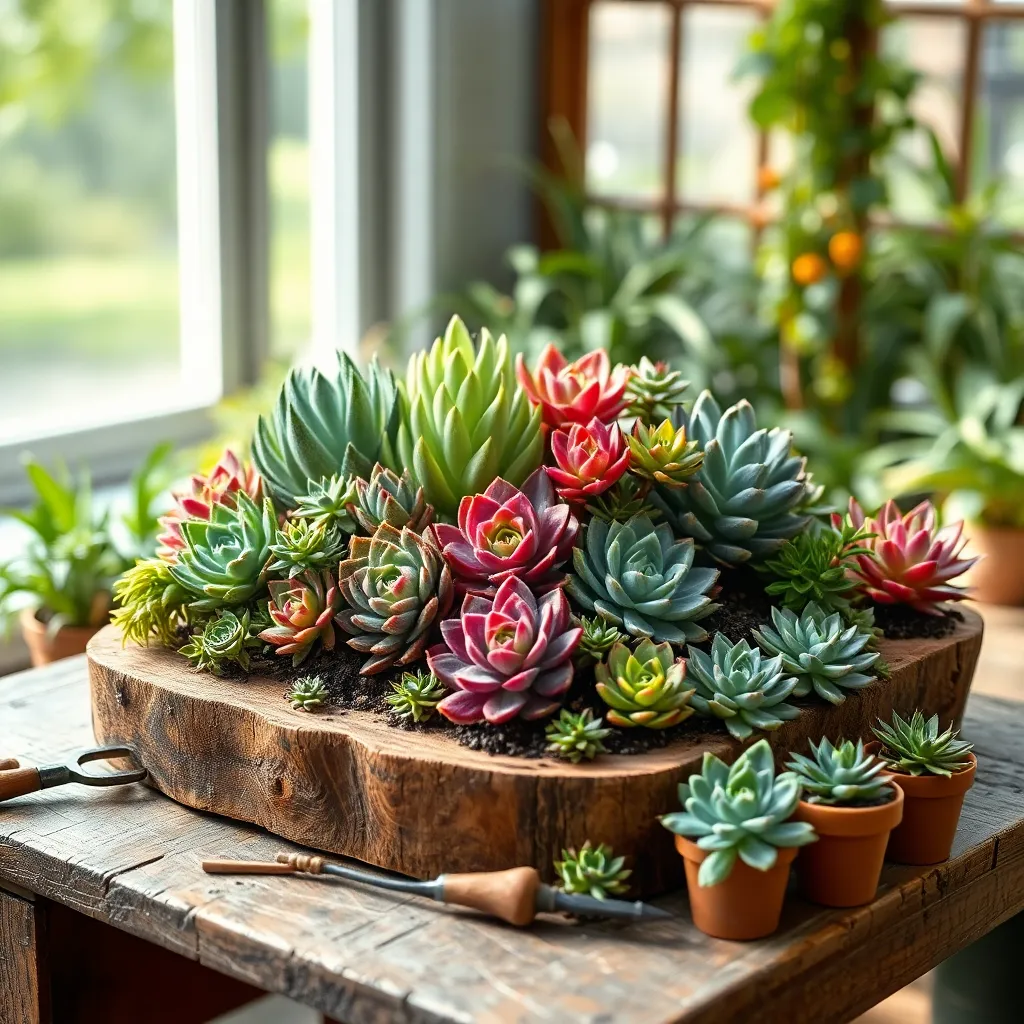
When designing eye-catching succulent arrangements, consider the contrast in colors and textures to create visual interest. Use a combination of rosettes, trailing varieties, and spiky forms to create a dynamic display that can capture attention from any angle.
Incorporate different heights and volumes of plants to add depth to your arrangement. Place taller succulents like Echeveria or Aloe in the center or back of your planter, while cascading varieties such as String of Pearls can gracefully spill over the edges.
Choose a container that complements your succulents and enhances the overall aesthetic. Consider using terracotta pots for a classic look, or opt for vintage teacups or rustic wooden boxes for a more whimsical approach.
Use a well-draining soil mix, as succulents are prone to root rot if left in waterlogged conditions. A simple mix of two parts potting soil, two parts coarse sand, and one part perlite will provide the right balance of moisture retention and drainage.
Water your arrangement infrequently, allowing the soil to dry out completely between waterings. A good rule of thumb is to water every two weeks, but this can vary based on humidity and light conditions in your area.
For an advanced touch, add decorative elements like rocks, driftwood, or miniature figurines to personalize your arrangement. These additions can enhance the visual appeal and create a unique focal point that reflects your style.
Containers: Picking the Perfect Fit
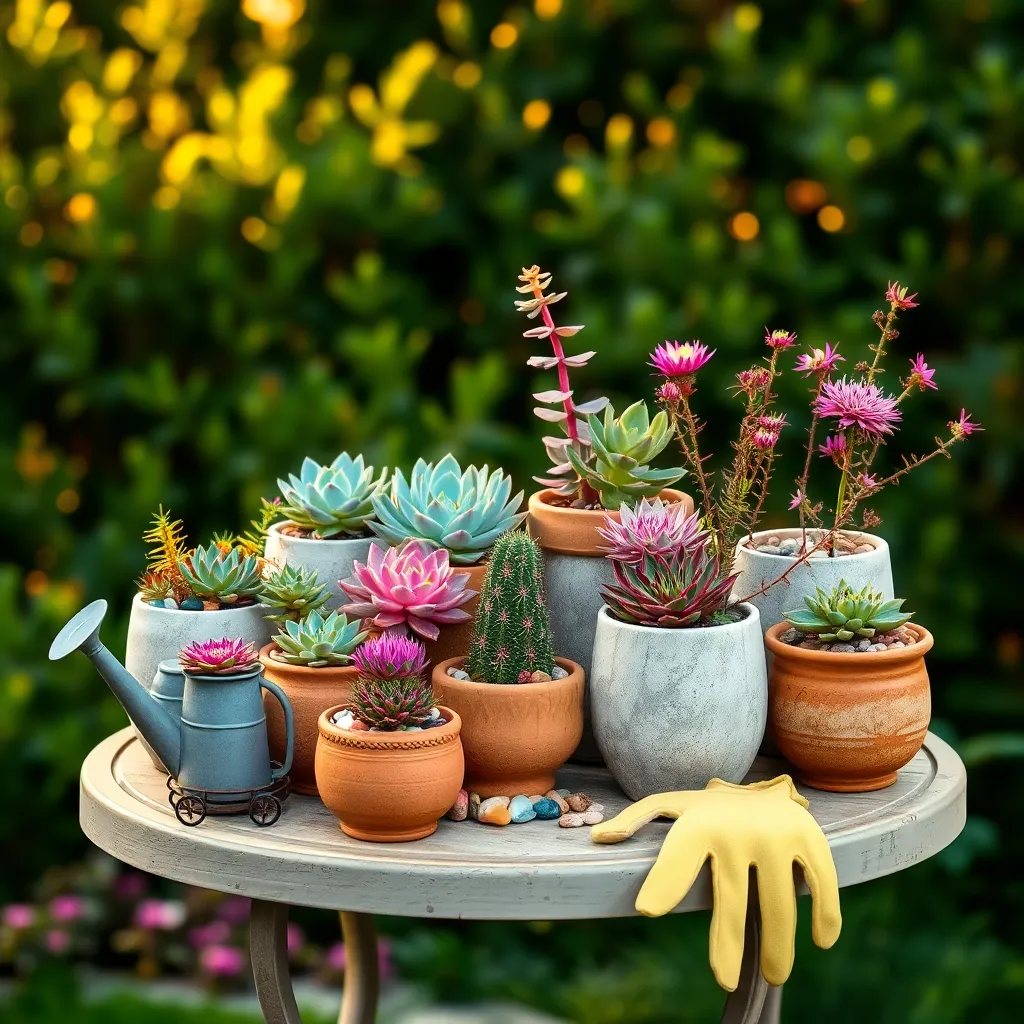
Choosing the right container is crucial for successful succulent arrangements. Consider the size and depth of the container, ensuring it provides enough space for root growth while complementing the visual design of your arrangement.
A wide, shallow pot is often ideal for succulents, as it mimics their natural growing conditions. This type of container allows for sufficient drainage, which is critical because succulents are prone to root rot if they sit in waterlogged soil.
Drainage holes are a must-have in any succulent container to prevent overwatering issues. If your chosen pot doesn’t have drainage holes, you can drill them yourself or ensure you water more sparingly.
For those looking to elevate their arrangements, consider using a tiered container. This not only creates visual interest but also allows each succulent to receive ample sunlight, which is essential for their growth and vibrancy.
Color and Texture Combinations
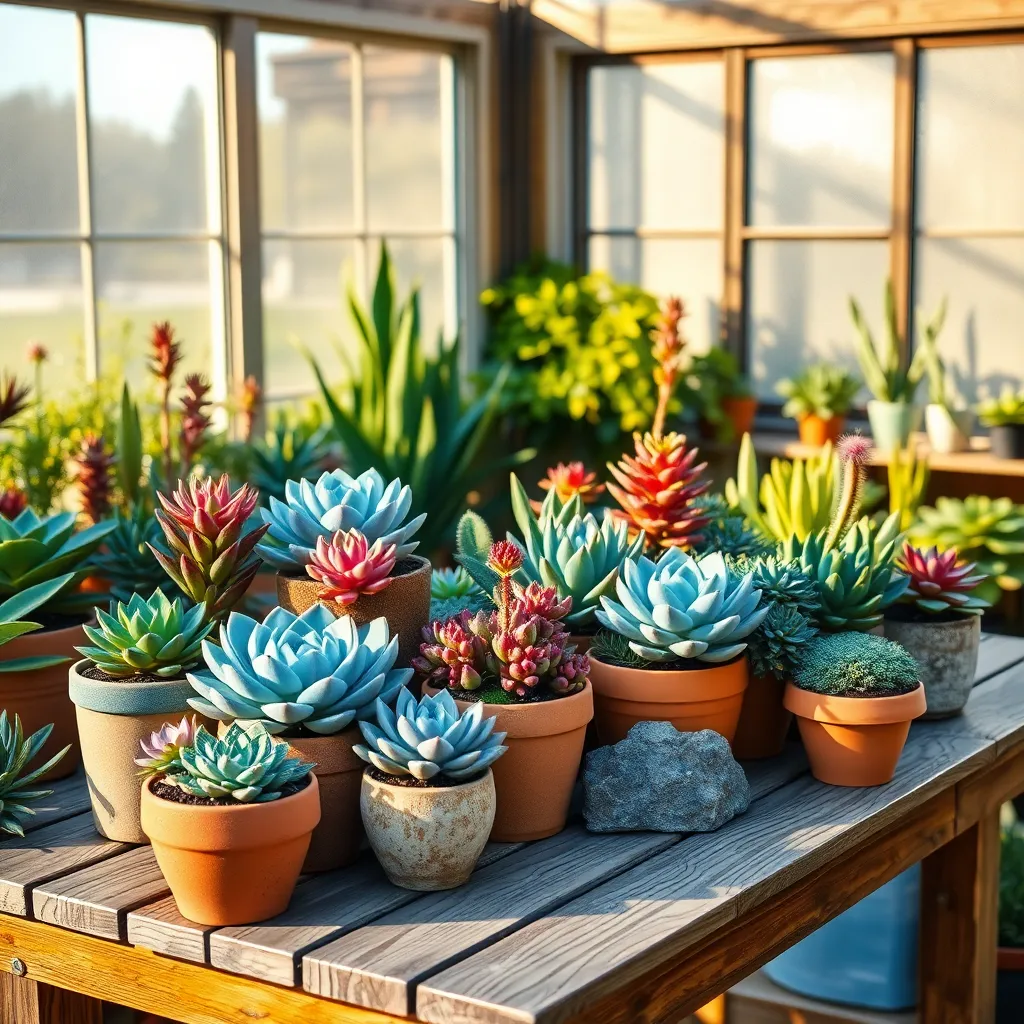
Creating stunning succulent arrangements begins with understanding the interplay of color and texture. Opt for a mix of vibrant hues like the deep purples of Echeveria and the bright greens of Sedum to create a visually striking display.
To enhance the aesthetic appeal, use succulents with varying leaf textures, such as the smooth, shiny leaves of Jade plants paired with the fuzzy leaves of Kalanchoe tomentosa. This contrast not only adds depth but also keeps your arrangement interesting from every angle.
Consider the size and shape of the succulents you choose to incorporate into your arrangement. Taller plants like Aloe vera add height, while compact rosettes like Sempervivum provide a grounded, structured base.
When selecting succulents, ensure they share similar growing requirements to thrive together. Most succulents prefer a well-draining cactus mix soil, and need watering only when the soil is completely dry, approximately every two weeks.
For advanced gardeners, experimenting with color theory can elevate your design. Try using complementary colors, such as pairing the red tips of Crassula Campfire with the blue-green tones of Graptoveria, to create a vibrant and harmonious arrangement.
Caring for Your Succulent Creations
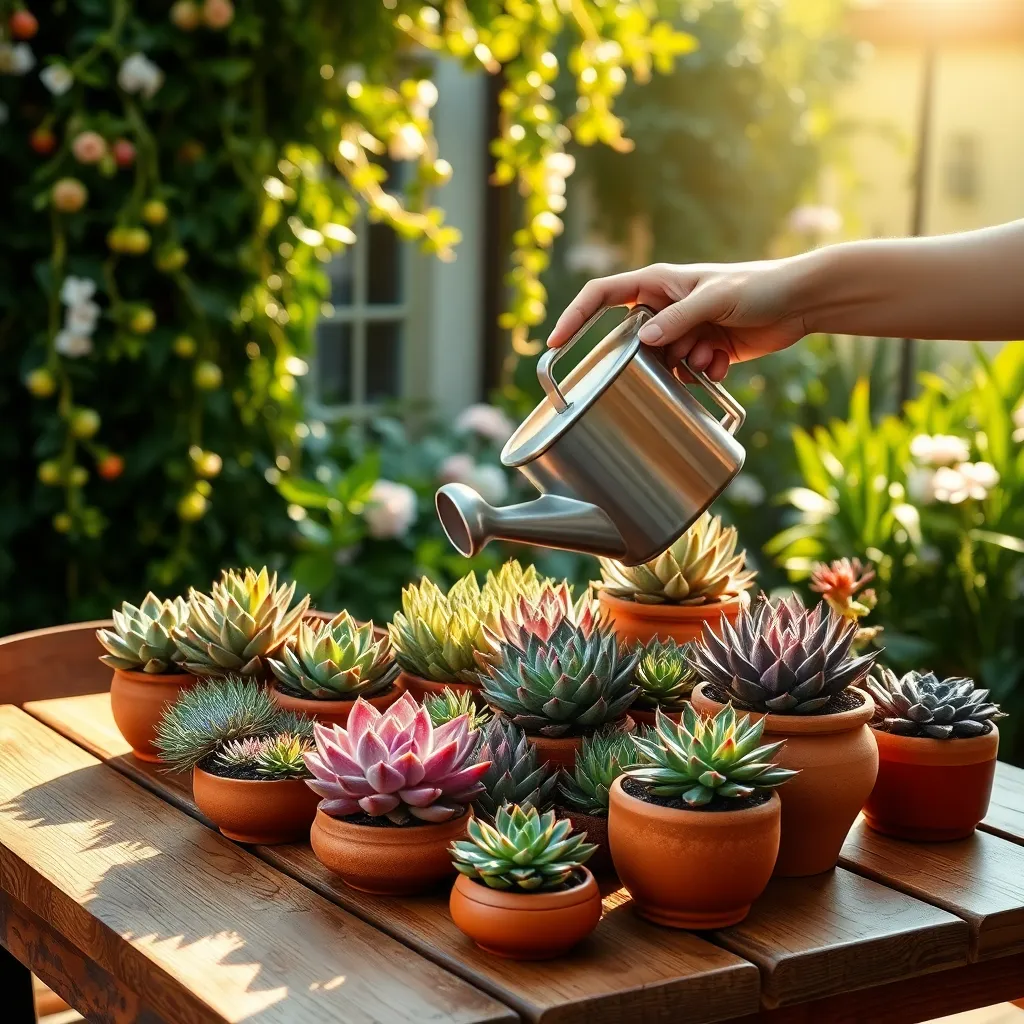
When caring for your succulent creations, it’s crucial to understand their water needs. Succulents thrive on infrequent watering, so let the soil dry out completely between sessions to prevent root rot.
Position your succulents in a location that receives ample sunlight, ideally around six hours a day. If direct sunlight is too intense, especially in summer, consider moving them to a spot with filtered light to prevent leaf scorching.
Soil composition is another key factor in succulent health. Use a well-draining soil mix, such as a cactus or succulent blend, or make your own by combining potting soil with perlite or coarse sand for improved drainage.
As your skills develop, you might experiment with more advanced techniques like propagation. Leaf and stem cuttings are a fantastic way to multiply your collection, offering a rewarding and cost-effective method to expand your garden.
Conclusion: Growing Success with These Plants
In exploring “Creative Succulent Arrangements for Beginners,” we delved into five key concepts that beautifully parallel nurturing healthy relationships. First, we discussed the importance of a solid foundation, akin to choosing the right potting mix for your succulents. Next, we highlighted the significance of variety, just as mixing different succulent types can create a visually pleasing arrangement. Third, we touched on the necessity of balance, ensuring each plant has space to thrive. Fourth, we emphasized consistent care, much like the regular attention relationships need. Lastly, we celebrated the beauty of growth, where both plants and partnerships flourish over time.
To put these insights into practice, take a moment today to identify one relationship in your life that could benefit from a little extra attention. Whether it’s a friend, family member, or partner, reach out with a heartfelt message or plan a get-together.
Remember to bookmark this article as a guide for enriching both your plant arrangements and connections. By continuously nurturing these relationships, you’re setting the stage for lasting success. Here’s to thriving, vibrant relationships that grow and evolve, just like the most beautiful succulent gardens.

